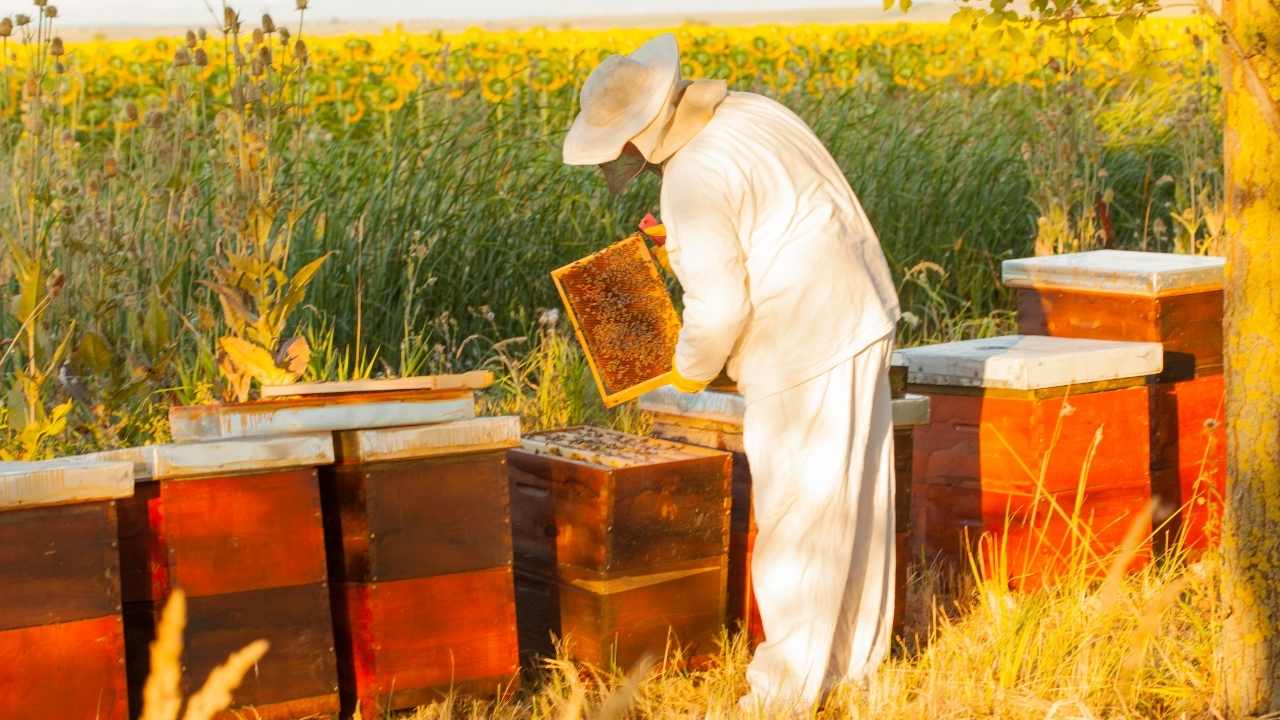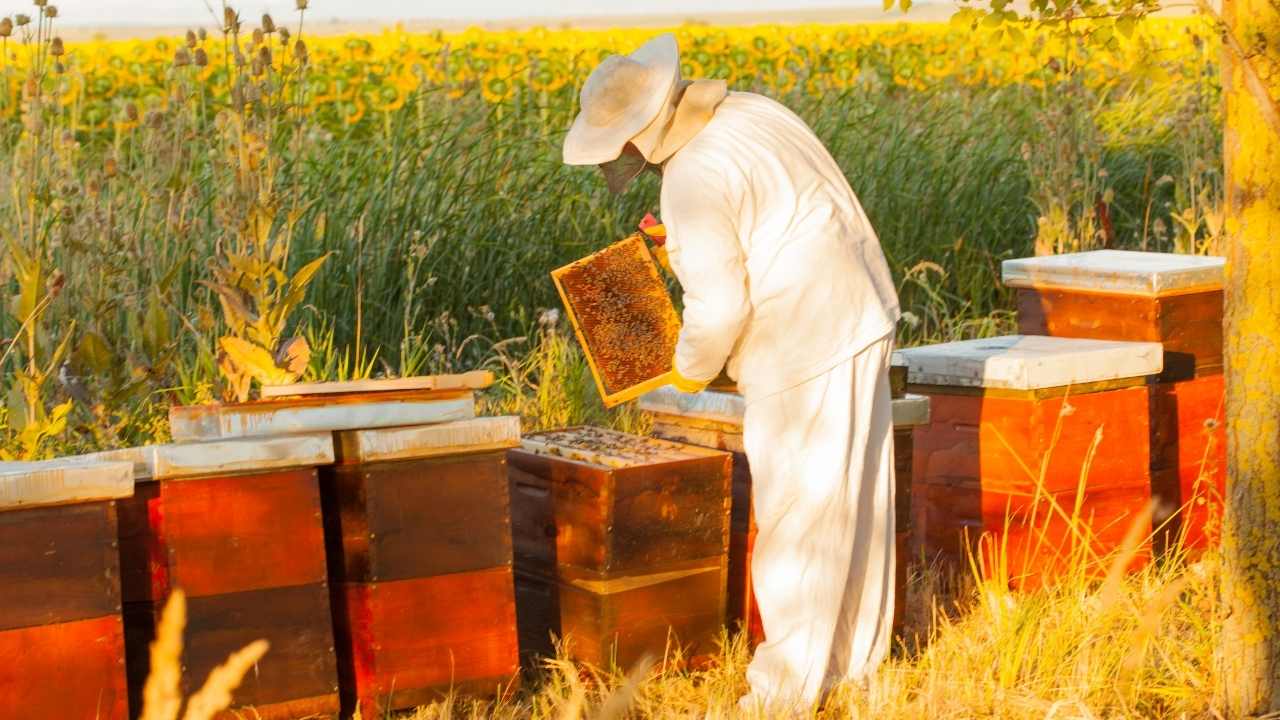
You’ve heard the buzz about beekeeping and are ready to dive into the world of Langstroth hives. Congratulations! This popular hive design, named after its creator Lorenzo Langstroth in the mid-1800s, has become a staple in modern beekeeping due to its versatility and ease of use. However, with so many options for frames, foundations, and hive stands, it can be overwhelming to know where to begin.
Fear not! In this deep dive into the world of Langstroth hives, we’ll guide you through everything you need to know about frames, foundations, and hive stands. You’ll learn how they work together to create a successful hive system and gain an understanding of how your bees interact with each component. We’ll also explore maintenance and inspection tips as well as ways to customize your setup for optimal success. So grab your veil and smoker – let’s get started on unleashing the full potential of your Langstroth hive!
Understanding Langstroth Hives
If you want to understand the most popular type of beekeeping equipment, you’ll need to become familiar with the Langstroth hive and all its components. The Langstroth hive design consists of several boxes stacked on top of each other, with a bottom board and a cover to protect the colony from weather elements. These boxes are called supers, which can be added or removed as needed for hive management techniques.
One key feature of Langstroth hives is their compatibility with standard-sized frames that hold honeycombs. Frames offer support for the honeycomb structure and make it easier for beekeepers to inspect their hives without damaging them. Additionally, frames allow beekeepers to extract honey more efficiently using a centrifugal force extractor. With this understanding of Langstroth hives, let’s now take a deeper look at frames and foundations.
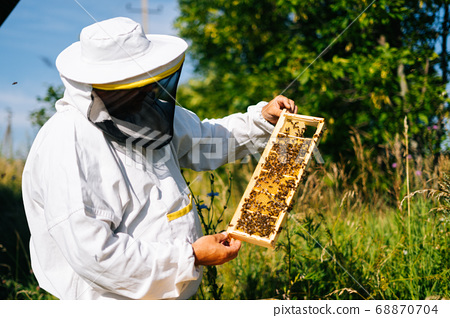
Frames and Foundations
When it comes to frames and foundations in your Langstroth hive, there are a few key things you should know. Firstly, there are different types of frames available, each with its own set of advantages and disadvantages. Secondly, the type of foundation you choose can have a significant impact on how your bees build comb and store honey. Finally, understanding how to properly install both frames and foundations is crucial for the overall health and productivity of your colony. Let’s dive into these topics so that you can make informed decisions for your Langstroth hive setup.
Types of Frames
As you explore the various options for frames, you’ll discover that there are different types designed to accommodate specific needs and preferences. The most common types of frames are deep and shallow frames, which vary in size and suitability for certain honey bee species. Deep frames measure at 9 1/8 inches while shallow ones measure at 6 1/4 inches. Deep frames are typically used by beekeepers who keep Italian honey bees as they require more space to store their brood, while shallow ones are commonly used for other honey bee species such as the Carniolan or Russian bees.
Aside from the size of the frame, another factor to consider is its material. Frames can either be made out of plastic or wood, each with its own advantages and disadvantages. Wooden frames offer a traditional look and feel but require regular maintenance due to their tendency to rot over time. On the other hand, plastic frames are more durable and easier to clean but may cause issues with ventilation inside the hive if not designed correctly. It’s important to weigh these pros and cons before making a decision on what type of frame is best suited for your hive setup.
Now that you have an idea about different types of frames, let’s delve into foundations – another crucial component in Langstroth hives.
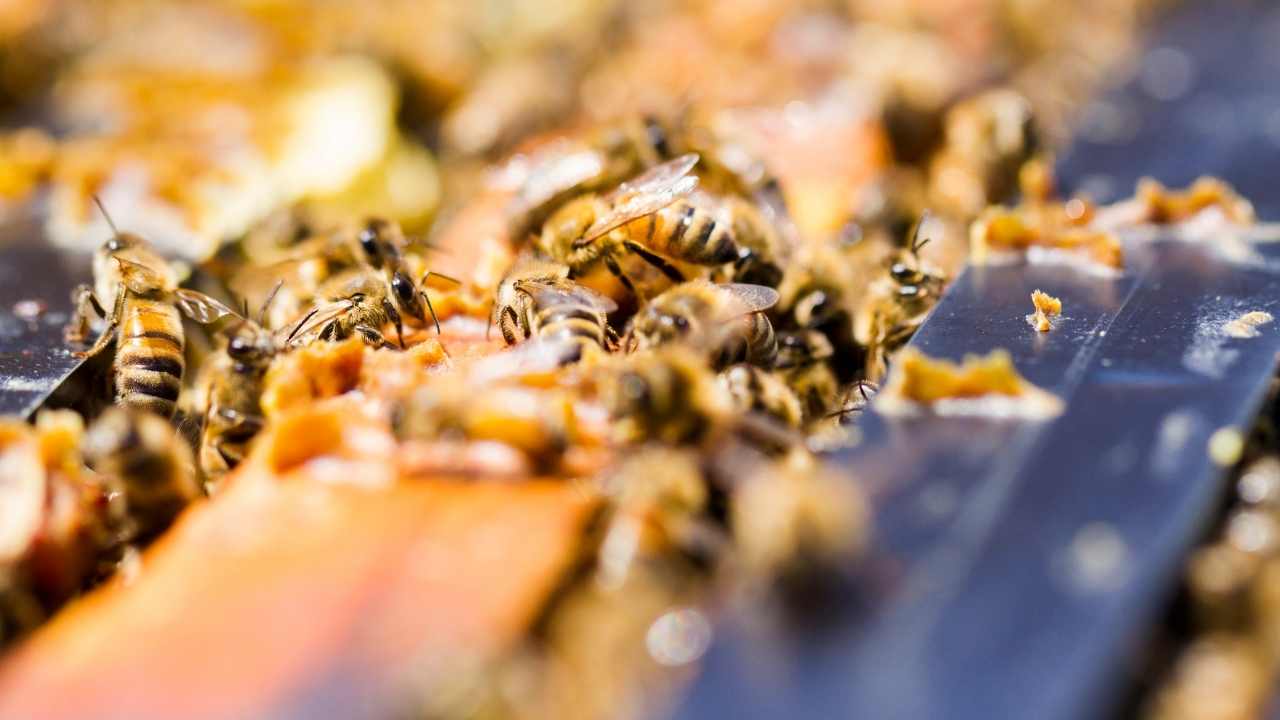
Types of Foundations
You’ll want to consider the type of foundation that best suits your beekeeping needs. One option is a floating foundation, which allows bees to build their comb naturally without being limited by the foundation. This can lead to healthier and more natural colonies, but it also means that the comb may not be as straight or uniform as with an anchored foundation. On the other hand, anchored foundations have wires embedded within them to keep the comb straight and uniform. While this can limit bees’ ability to build naturally, it has been shown to increase honey production by up to 30%.
Another consideration when choosing a foundation is whether or not it is wax coated. Wax coating helps bees take more readily to the new foundation and encourages them to start building comb faster. Additionally, wax coated foundations are less likely to bow or warp over time than uncoated ones. Overall, choosing a foundation will depend on your priorities for your colony and what you hope to achieve in terms of honey production and colony health.
Now that you’ve chosen your desired type of foundation, you’re ready for installation! In the next section we’ll cover how to install frames and foundations into your Langstroth hive for optimal results.
How to Install Frames and Foundations
Get ready to install your foundation and frames like a pro and ensure optimal results for your colony! First, you must make sure that the frames are properly aligned with each other in the hive. A misaligned frame can cause bees to build comb in between or around the frames, making inspections difficult and even damaging honeycomb. To prevent this issue, use a spacer tool to ensure that all of your frames have consistent spacing within the hive.
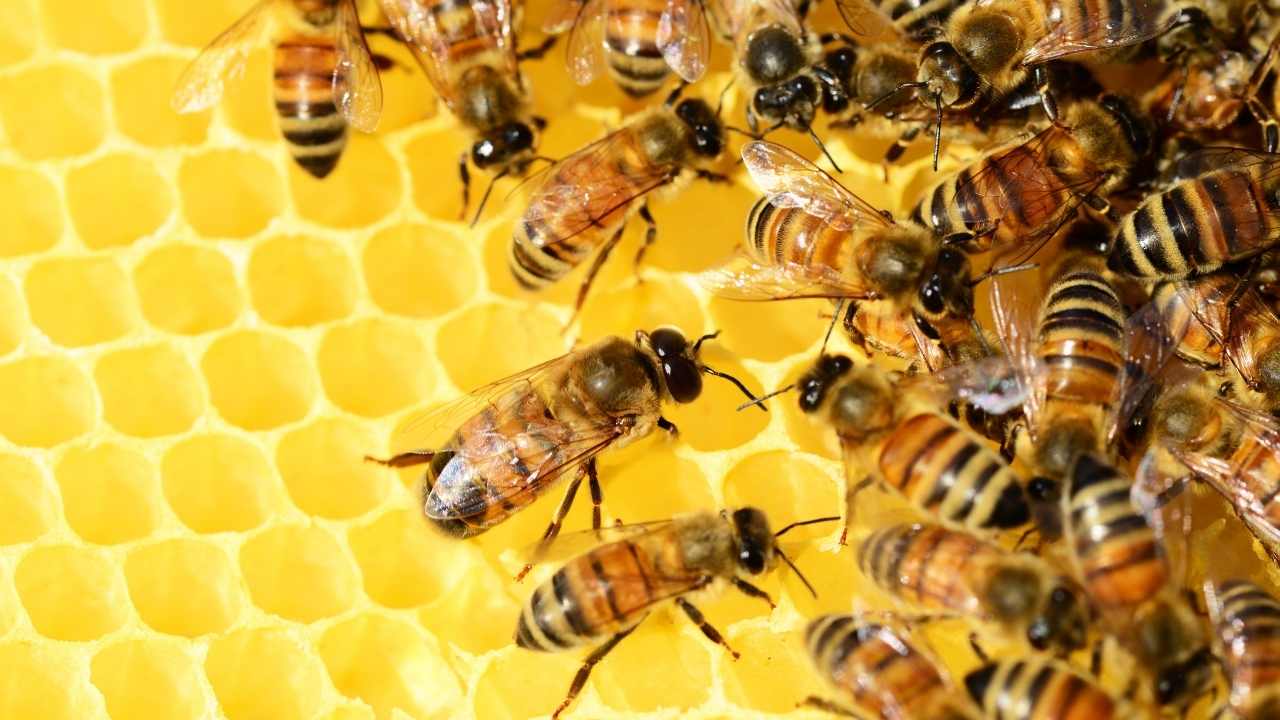
Next, gather all necessary tools for installation such as a hammer, nails or stapler, and wire cutters if using wired foundation. Place the foundation into the grooves on both sides of the frame, ensuring it is centered. Then nail or staple the top bar onto one end of the frame while holding it steady with one hand. With wire cutters, snip off any excess wires protruding from wired foundation before repeating this step on the opposite side of your frame. Doing so will secure your foundation firmly in place without any chance of falling out during inspection. If you encounter any problems during installation such as uneven spacing or difficulty fastening down your foundation properly, refer to installation troubleshooting guides or consult experienced beekeepers for advice.
As you finish up installing your frames and foundations successfully, let’s move on to our next topic: Hive Stands!
Hive Stands
You can elevate your beekeeping game by using a sturdy stand for your hive. Hive stands offer many benefits, including increased ventilation and protection from pests. Here are four key factors to consider when choosing the right hive stand for your apiary:
-
Sturdy construction: A well-built hive stand should be able to support the weight of your hive without wobbling or tipping over, even in strong winds.
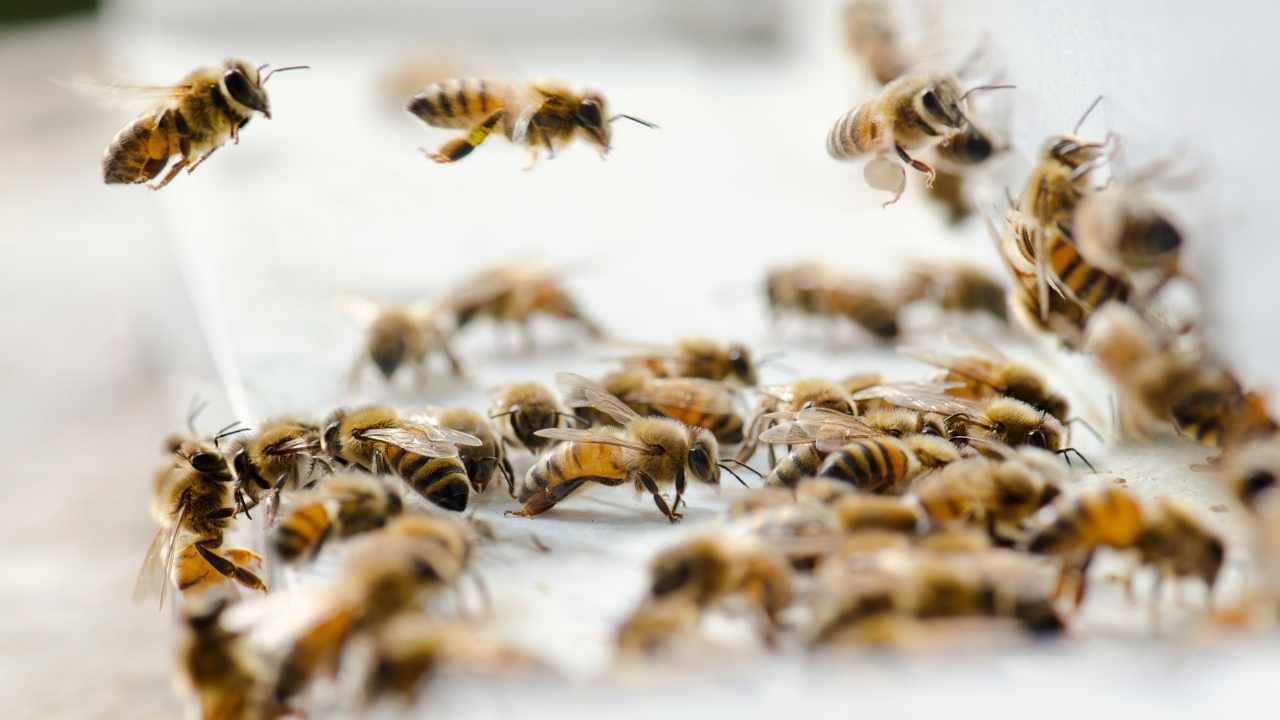
-
Height adjustments: Look for a hive stand that allows you to adjust its height according to the needs of your bees. This feature will come in handy if you need to increase or decrease the distance between frames or want to make it easier for bees to enter and exit the hive.
-
Ventilation: Good ventilation is essential for maintaining a healthy colony. Choose a hive stand that allows air to circulate freely underneath and around the hive.
-
Pest control: Some types of hives stands come equipped with built-in pest control measures, such as mesh screens or trays that catch falling debris and prevent ants from crawling up into the hive.
By investing in a high-quality hive stand, you’ll give yourself an edge when it comes to maintaining healthy, productive hives throughout the year. Now let’s move on to discussing how regular maintenance and inspection can help keep your bees thriving!
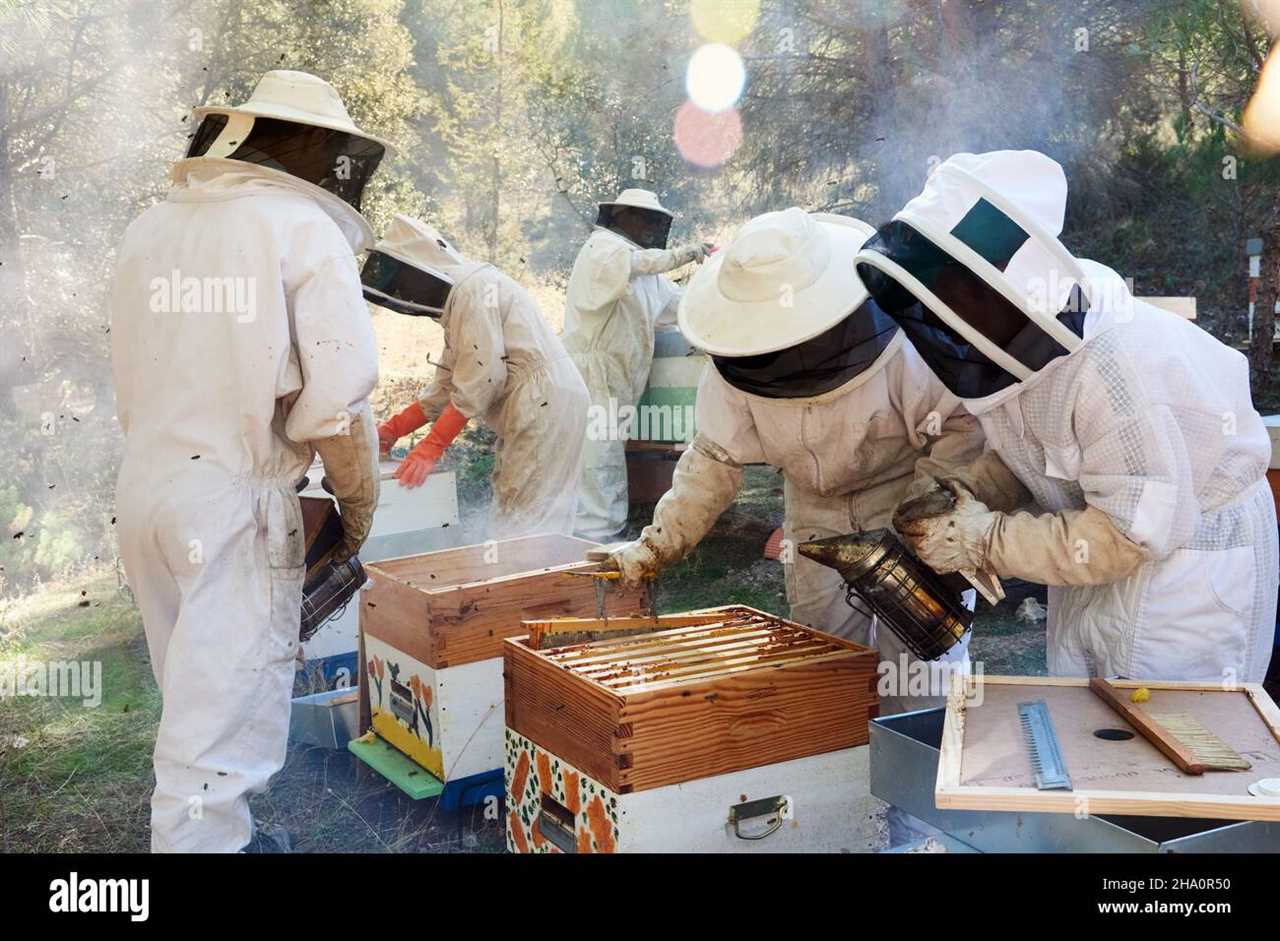
Maintenance and Inspection
When it comes to maintaining and inspecting your hive, there are a few key points to keep in mind. First, you’ll need to know how to properly inspect your hive in order to ensure that everything is working as it should be. This includes checking for signs of disease or pests, as well as making sure that the frames, foundations, and hive stand are all in good condition. Additionally, you’ll want to be familiar with common issues and solutions so that you can quickly address any problems that arise. By staying on top of maintenance and inspection tasks, you can help ensure the health and productivity of your colony over time.
How to Inspect Your Hive
Now it’s time to take a peek inside your hive and see how the bees are doing! Before you start, make sure you have all the necessary tools: a smoker, protective gear (such as gloves, veil, and suit), and a hive tool. Inspecting techniques may vary depending on the season and hive conditions. However, some general steps include smoking the entrance to calm the bees down, removing the outer cover, gently prying out frames with your hive tool one by one, and inspecting both sides of each frame for brood patterns (the arrangement of eggs, larvae, and pupae) and honey stores.
While inspecting your frames, keep an eye out for any identifying problems such as pests or diseases. Look for signs of varroa mites (small red or brown parasites that attach themselves to bees) on adult bees or in brood cells. Check for foulbrood (a bacterial disease that can kill entire hives) by looking for sunken cappings or discolored larvae. If you notice any issues like these during your inspection, consult with a local beekeeping association or experienced beekeeper to determine the best course of action. Remember that prevention is key when it comes to maintaining healthy hives!
To maintain your frames, foundations, and hive stand properly without disrupting your colony’s growth and productivity too much is crucial. Incorporate regular inspections into your routine so you can catch potential problems early before they become more serious issues.
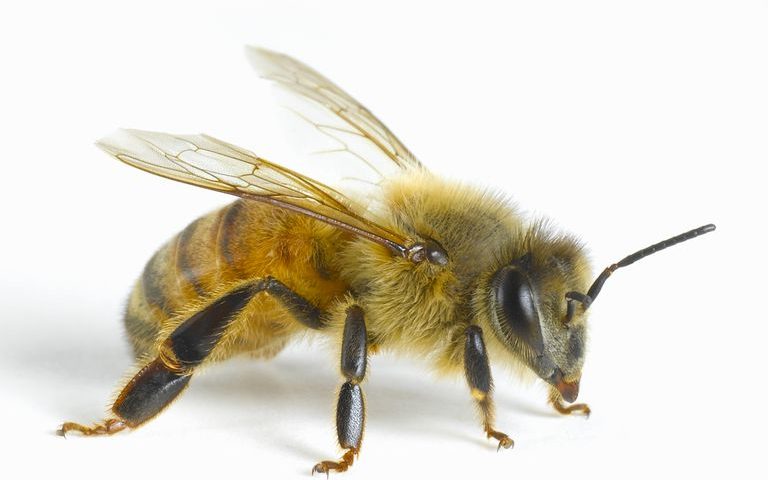
How to Maintain Your Frames, Foundations, and Hive Stand
As you continue your journey as a beekeeper, it’s important to maintain the structure of your colony by regularly checking and tending to the building blocks that house and support your buzzing friends. Frames, foundations, and hive stands are crucial components that require proper maintenance. Cleaning equipment after every use is necessary to prevent disease transmission between colonies. You can clean frames and foundations by scraping off wax and propolis with a hive tool or metal scraper. It’s also essential to check for any damage or wear on frames and replace them if necessary.
Hive stands should be checked for stability regularly. If they wobble or lean, it could cause the hive to collapse during harsh weather conditions. Additionally, pests such as ants and mice can infiltrate hives from poorly maintained stands. Preventing pests involves keeping the area around the stand free of debris and cleaning out any leftover honey or sugar syrup spills that attract them. By maintaining these critical components of your colony, you ensure its longevity, health, and productivity without encountering common issues such as overcrowding or queenlessness in the future.
Moving onto ‘common issues and solutions,’ let’s discuss how to address these problems head-on so that you can keep your colony thriving throughout the year!
Common Issues and Solutions
Exploring ways to maintain a thriving colony, beekeepers must address common issues and their solutions. Troubleshooting issues with frames, foundations, and hive stands is crucial in ensuring the health and productivity of your bees. One of the most common issues is wax moths infesting the frames. To prevent this, make sure to inspect your hives regularly for signs of infestation such as webbing or larvae. You can also freeze the frames before storing them to kill any potential wax moth eggs.
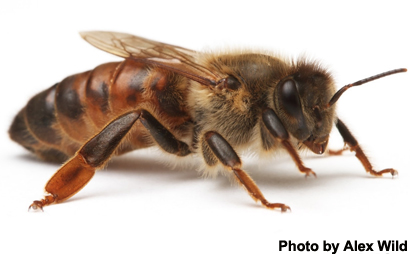
Another issue that beekeepers face is warped or cracked frames. This can be caused by changes in temperature or humidity levels in the hive. To prevent this, use high-quality wood for your frames and store them properly when not in use. If you notice any warping or cracking, replace the affected frame immediately to avoid further damage to your colony. By taking preventative measures and addressing these common issues promptly, you can ensure a productive and healthy hive setup for years to come. Now let’s move on to customizing your setup for even better results!
Customizing Your Setup
When personalizing your beekeeping setup, it’s crucial to consider the needs of your colony and the practicality of your own preferences. Here are some customizing options to help you create the perfect hive for both you and your bees:
- Frame type: Choose between wooden frames or plastic frames depending on what suits your style. Wooden frames are more traditional and provide a natural feel to the hive, but they require more maintenance. Plastic frames, on the other hand, are more durable and easier to clean.
- Foundation type: There are two main types of foundation- wax foundation and plastic foundation. Wax foundation is more natural for bees since it mimics their honeycomb structure. However, plastic foundation is much cheaper and can last longer.
- Hive stand material: The hive stand holds up the entire hive, so it’s essential to choose a sturdy material such as metal or treated wood that can withstand harsh weather conditions.
- Entrance reducer: An entrance reducer controls airflow into the hive during different seasons by limiting access points for bees entering or exiting.
Personal preferences play an important role in deciding how to customize your beehive setup while keeping in mind what works best for your colony. With these options in mind, you can create a unique setup tailored specifically for you and your bees without sacrificing practicality or functionality.
As you continue with beekeeping, there will always be tips and tricks that work well with specific setups that can improve overall success rates with colonies even further than just customization alone!

Tips and Tricks
Get ready to level up your beekeeping game with some helpful tips and tricks! When it comes to harvesting honey efficiently, there are a few things you can do to make the process easier. First, consider using a fume board or bee escape board before removing frames. These tools help encourage bees to move away from the honeycomb, making it easier for you to access and harvest the honey without disturbing the hive too much. Another tip is to use a hot knife or uncapping fork to quickly remove the wax caps on each frame before extraction. This method saves time and reduces waste compared to using a traditional uncapping knife.
Beekeeping safety precautions should always be taken seriously in order to avoid potential injury or harm. Always wear protective gear when working with bees, including gloves, a veil, and a suit. Consider investing in an electric fence around your hives if you live in an area with bears or other wildlife that may try to raid your hives for honey. Additionally, be aware of any allergies you may have and keep medication on hand just in case of an emergency situation. By following these tips and tricks for efficient harvesting and beekeeping safety precautions, you can enjoy successful beekeeping while keeping yourself safe from harm.
Frequently Asked Questions
What is the best way to prevent pests and diseases from affecting my Langstroth hive?
Preventing pests and diseases from affecting your Langstroth hive requires a combination of integrated pest management techniques and natural remedies. While it may be tempting to use harsh chemicals, these can harm your bees and contaminate the honey. Instead, focus on maintaining a healthy environment by monitoring for signs of infestation and promptly addressing any issues. Consider using screened bottom boards to control varroa mites, planting bee-friendly flowers to attract beneficial insects, and practicing regular hive inspections. Additionally, natural remedies such as essential oils or powdered sugar dusting can help deter pests without harming your bees. By taking a proactive approach to pest and disease prevention, you’ll ensure the health and longevity of your Langstroth hive while still keeping your bees happy and productive.
Can I use different types of frames and foundations in the same Langstroth hive?
If you’re thinking of mixing frames and foundations in your Langstroth hive, there are a few things to consider. While it’s possible to use alternatives, such as top bars or foundationless frames, alongside traditional Langstroth frames, compatibility can be an issue. Advantages include the ability to experiment with different techniques and tips, while disadvantages may include increased risk of disease transmission and uneven comb building. Benefits of mixing frames and foundations may include greater customization options for your hive, but risks should also be considered. Overall, it’s important to weigh the pros and cons before deciding whether or not to mix different types of frames and foundations in your Langstroth hive.
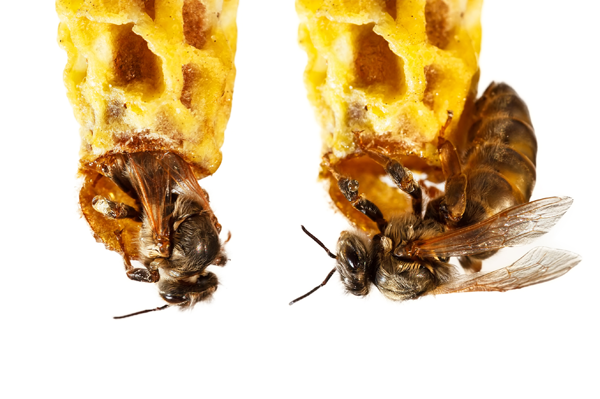
How often should I replace my Langstroth hive’s frames and foundations?
As a beekeeper, it’s important to keep your Langstroth hive in good condition for the health and productivity of your colony. Part of this upkeep involves regular frame maintenance and replacing your foundation when needed. The lifespan of foundations can vary depending on the material and usage, but it’s generally recommended to replace them every 5-7 years to prevent disease buildup and maintain optimal comb structure. Frames should also be inspected regularly for damage or wear and replaced as necessary. Keeping up with these tasks will not only benefit your bees but also ensure that you’re getting the most out of your Langstroth hive setup. Remember, a healthy colony is a happy colony!
Are there any specific tools or equipment I need for Langstroth hive maintenance and inspection?
If you want to maintain your Langstroth hive properly, it’s essential to have the right tools and equipment. First, you’ll need a hive tool for prying open frames and scraping away propolis or wax buildup. A bee brush is also handy for gently removing bees from frames during inspections. A smoker can be helpful in calming the bees down before opening up the hive, while protective gear such as a veil, gloves, and suit will keep you safe from stings. Additionally, having a frame grip or holder can make it easier to manipulate frames without damaging them. Finally, consider investing in a good quality inspection board or mat that provides an easy-to-clean work surface while reducing the risk of cross-contamination between hives. With these tools at hand, you’ll be well-equipped to perform regular maintenance and inspections on your Langstroth hive with confidence and ease.
Can I paint or decorate my Langstroth hive, and if so, what type of paint should I use?
Want to add some personality to your Langstroth hive? You can absolutely paint or decorate it! There are a variety of painting options available, but it’s important to use a non-toxic paint that won’t harm your bees. Consider using an exterior acrylic latex paint, which is weather-resistant and safe for the bees. When it comes to creative hive decorations, the possibilities are endless. You can stencil designs onto the boxes or even use decoupage techniques with natural materials like dried flowers or leaves. Just remember to keep any decorations on the outside of the hive and avoid covering up any ventilation holes. A personalized touch can make your Langstroth hive stand out and reflect your unique style while still providing a comfortable home for your buzzing friends.
Conclusion
Congratulations, you’ve taken a deep dive into the world of Langstroth hives! By now, you should have a good understanding of the different components that make up this popular type of beehive. From frames and foundations to hive stands and customization options, there’s a lot to consider when setting up your own Langstroth hive.
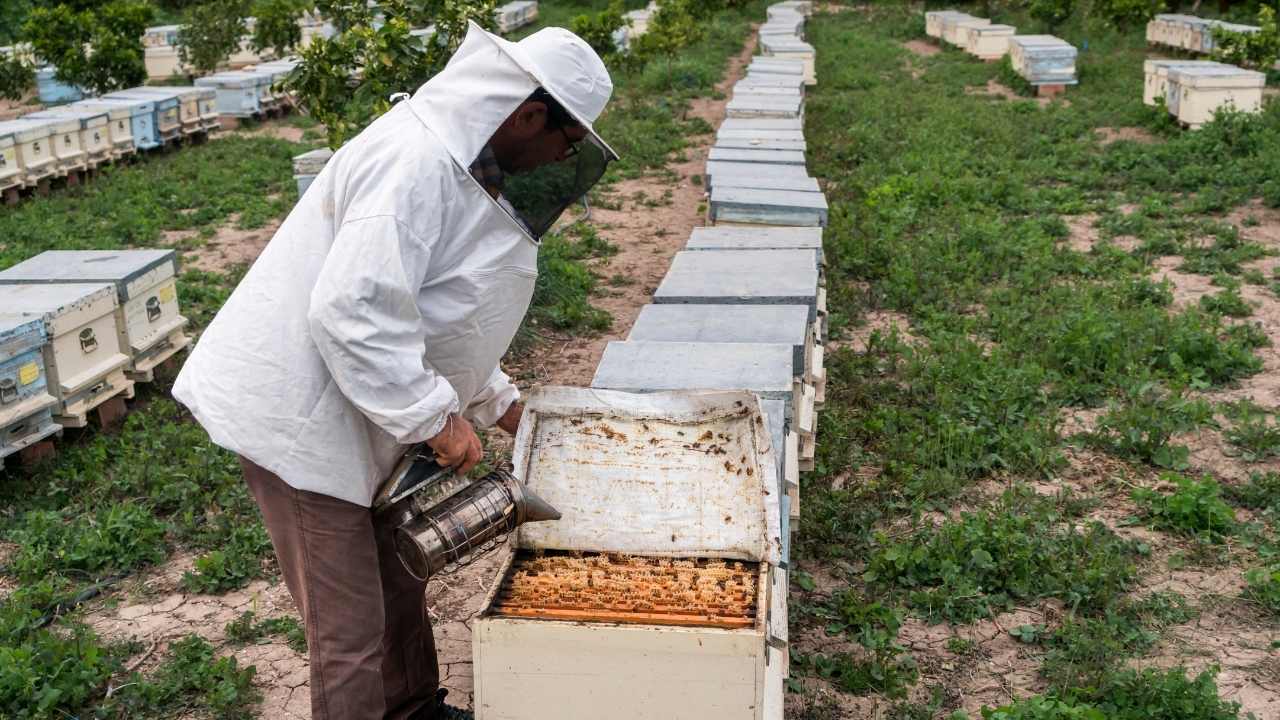
One interesting statistic to note is that according to the USDA, honeybee populations in the United States have been on the decline for several years. This makes it all the more important for beekeepers to provide safe and healthy habitats for their bees. By taking care of your Langstroth hive and regularly inspecting it, you can help ensure that your bees are thriving and contributing to our ecosystem.
Remember, while setting up a Langstroth hive may seem daunting at first, with some basic knowledge and preparation, anyone can become a successful beekeeper. Good luck on your journey towards becoming an expert in beekeeping!

Roger Thomas is a seasoned beekeeper and hive architect with a deep-seated passion for sustainable living. His fascination with bees has shaped his professional career, giving him practical and theoretical expertise in bee behavior, colony health, and optimal hive conditions. Roger’s technical skills shine in his bespoke hive creations that cater to the specific needs of diverse bee species, while his sustainable practices promote environmental balance and the wellbeing of the bee population.
As he continues his journey in beekeeping, Roger has become a dedicated advocate for responsible practices and an insightful educator in his field. His posts aim to inspire new beekeepers, underline the importance of sustainability, and showcase the remarkable contribution bees make to our ecosystem. Roger invites you to join him as he delves into the world of bees and the rewarding, honey-sweet art of beekeeping.
